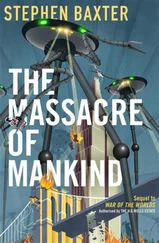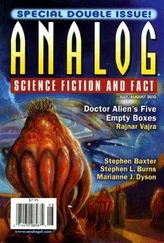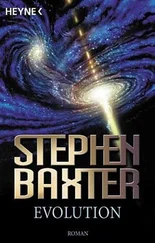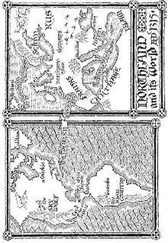And when she went public — as, of course, she must have anticipated — she found herself, as the first President since Kennedy to approve a start-up Moon program, riding on a wave of popular approval. The language of the commentators was helpfully blunt. This is America. We aren’t going to sit here and let some nano-bug screw us over like in Scotland. Let’s go to the Moon and kick butt…
The comforting myth of American can-do, Henry thought: the idea that we can do something, President and military and nuclear fleets and spaceships, act to save ourselves just like in the past. Maybe it was all a delusion, wish fulfilment. But when it was harnessed behind a coherent project, the can-do myth was powerful indeed.
And the approval ratings it was giving the President didn’t hurt either.
So NASA had been given the funds and go-ahead to assemble the mission. But the decision was being made in stages; the approval to launch was still being withheld. It seemed to Henry that there was still a component of the public’s thinking — and hence of the Administration’s — that wished for this problem to go away. More rationally, the President was being urged to wait until the results of attempts to disrupt the Moonseed — with conventional bombs, nukes and other methods — were known. Maybe it wouldn’t be necessary to risk the lives of astronauts in this jaunt to the Moon.
So the Prez was hanging fire, waiting for the news to get worse, as it surely would.
…Here was Henry, delivered to the heart of the Astronaut Office. It was just a plain-looking briefing room filled with hard-backed chairs. It could have been a briefing hall in any large corporate or government building, he thought, anywhere in the country. All there was to betray its true nature were the rows of Shuttle mission plaques on the walls, nearly a hundred of them dating back to 1981, the bold, patriotic designs and rings of crew names commemorating forgotten missions, strangely old-fashioned.
Henry had never been here before, inside the lair of the hero jock pilots; his interest had always been solely in unmanned space exploration, and he would never have come to Houston, centre of the manned effort, at all, if not for the location of the extraterrestrial samples facility here.
And here, waiting for him in a grubby blue Shuttle astronaut’s coverall, was Geena, his ex-wife, with others he didn’t know. Geena had a look he’d come to recognize. I really, really don’t want to be here, with you, Henry…
“Henry,” she said, “we’re going on a little trip together.”
He frowned. “The Cape?”
“Further than that,” she said sourly.
And then he saw it, and his heart sank. “ The Moon. You’re going to the Moon, with me.”
“No,” she snapped. “ You’re going with me. I’m the fucking mission commander.” She eyed him. “It isn’t my fault. Thanks to you I’ve been involved in this from the start. Championing it. Who else would they pick?”
“Not the kind of scenario you generally have to think about in marriage guidance counselling sessions, huh.”
“Just as well we didn’t have any,” she said heavily. “As long as we’re both professional about this we’ll get through it.”
“Maybe.” He grinned. “It sure does appeal to my sense of irony.”
“Henry—”
“Aren’t you going to introduce me to your colleagues?”
With Geena was a mission designer she introduced as Frank Turtle, a skinny, owlish, bearded guy in bell-bottom jeans who was probably older than he looked. And there were a couple of astronauts: both men, both aged around forty, both with hard-muscled arms folded across their sports shirts. They regarded Henry with evident distaste, and said as little as they had to.
Turtle, it turned out, had been at the heart of devising this improvised lunar mission from the start, and so had found himself catapulted upwards in terms of responsibility — if not, Henry suspected, in such tangibles as his salary, the size of his office, and the colour of his carpet. He looked as if the responsibility was crushing him.
Frank Turtle coughed. “Dr Meacher, we’ve tried to devise a training program to get you through as much as possible in the time we’ve got. There are three main phases. Suitability, where the medicos assess if you could survive a space mission at all. Generic training, in emergency procedures, weightlessness, so on. Finally crew training, where you’ll be taken through the launch and docking procedures.” He scratched his receding hairline. “It’s going to be a scramble; I don’t know what resources we can offer you. I don’t think NASA personnel have ever been so stretched. For instance we’re going to have to force through Shuttle launches to take up the spacecraft components. We’re all working double shifts… equivalent to a pace of sixteen Shuttle launches in a year, if we had to keep it up that long…”
Geena said to Henry heavily, “Guys like Frank in operations and Mission Control, and the engineers at the Cape, and the flight crews, are the true heroes of this, Henry. The greatest pace we achieved in the history of the Shuttle program was nine launches, in the year before Challenger. I have guys working their asses off, doing double or triple shifts. Just don’t forget it. This mission isn’t about you. It’s about them.”
The astronauts eyed him coldly.
He wondered what to say. “I’m grateful.”
None of them was comfortable. He sensed anger. Frustration. Henry could see conflict in Geena’s face, and Frank Turtle’s.
It wasn’t hard to understand why.
NASA tended to think of itself as a heroic agency, capable of taking on whatever challenges were thrown at it. But the truth was, all the way back to Mercury, they had never launched a manned mission without every aspect of it being timelined, checklisted, simulated and rehearsed, over and over, until every possible glitch had been identified and contingency-planned, until the crew knew the mission so well they were actually desensitized to its dangers.
Running a mission like this — making it up as they went along — was alien to a NASA culture that went back half a lifetime. Culture shock for us all, he thought, with a certain relish.
Geena was still talking. “Your suitability training will be performed here, in the US. Your crew training will take place in Star City. The generic training will be at a mixture of locations; we’re agreeing the objectives with the Russians now, and—”
“Woah. Star City? Isn’t that Moscow?”
Turtle said, “Our launch manifest is full, in the window we have. You’ll be taken to orbit in a Russian Soyuz.” He smiled, weakly. “The Russians are working with us. Planet in peril. Hands across the sea. All that stuff.”
“Oh.” Oh, shit.
Geena grinned, with relish of her own. She said sweetly, “Didn’t anyone tell you? And by the way.”
“What?”
“I’m running your training.”
He was to be flown to Brooks Air Force Base in San Antonio, to report to the School of Aerospace Medicine there. And Geena was going to take him there, in a T-38, flying from Ellington Air Force Base close to JSC.
The T-38s were supersonic jet trainers which the astronauts used to maintain their flying proficiency, and they used them as personal taxi cabs, taking themselves and their colleagues back and forth between NASA sites at Houston and the Cape and Alabama and elsewhere. The pilots had been flying the little planes since the 1960s, and they were a familiar sight in the skies over Houston.
But Henry had never flown one before. And certainly not one piloted by his ex-wife.
It took him an hour just to get suited up, in a flight suit, helmet, boots, parachute, survival kit. The tech had to walk him from the personal gear room to the runway, because Geena was already in the cockpit.
Читать дальше
Конец ознакомительного отрывка
Купить книгу












